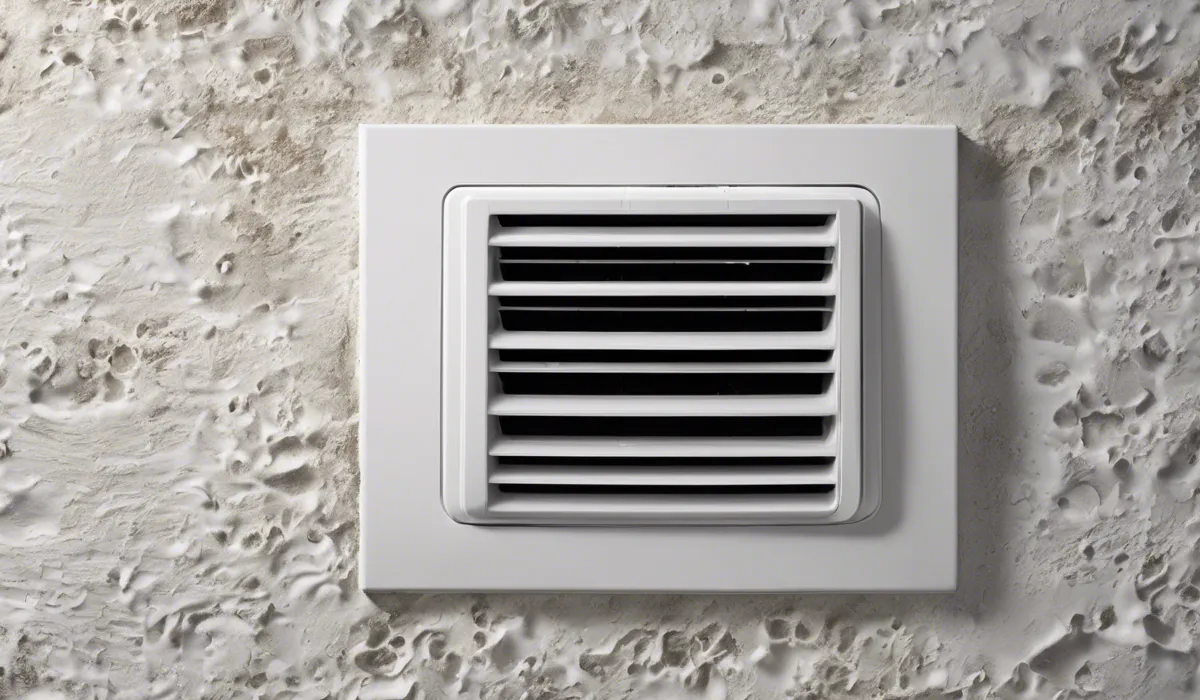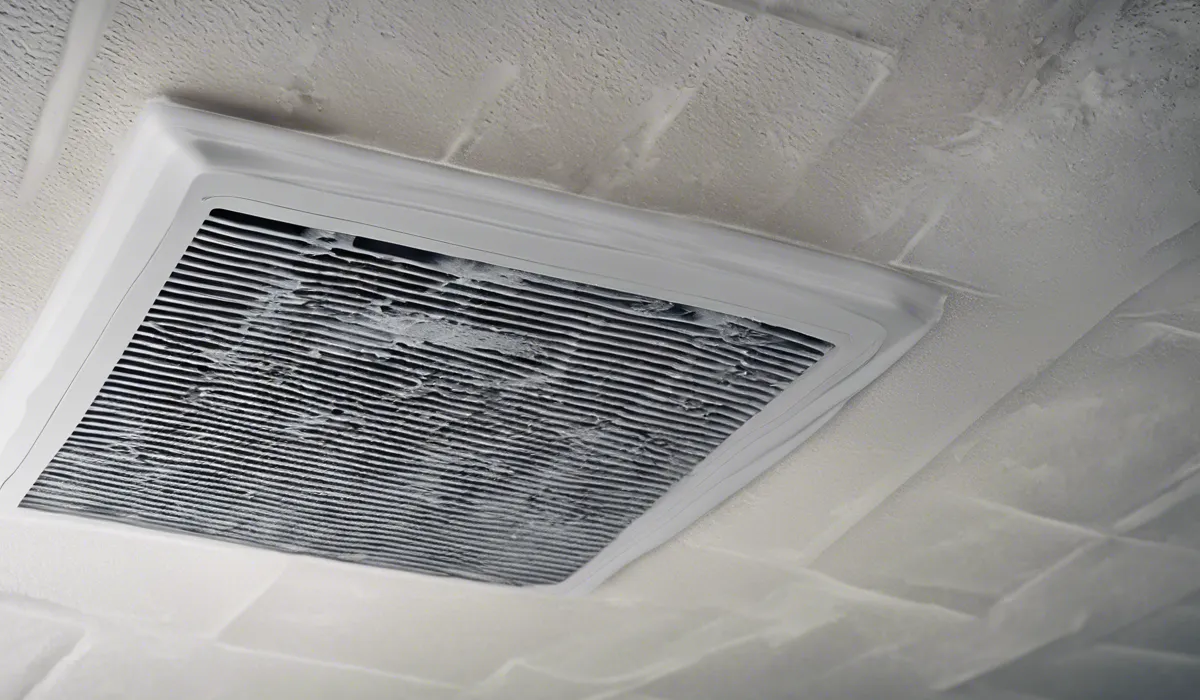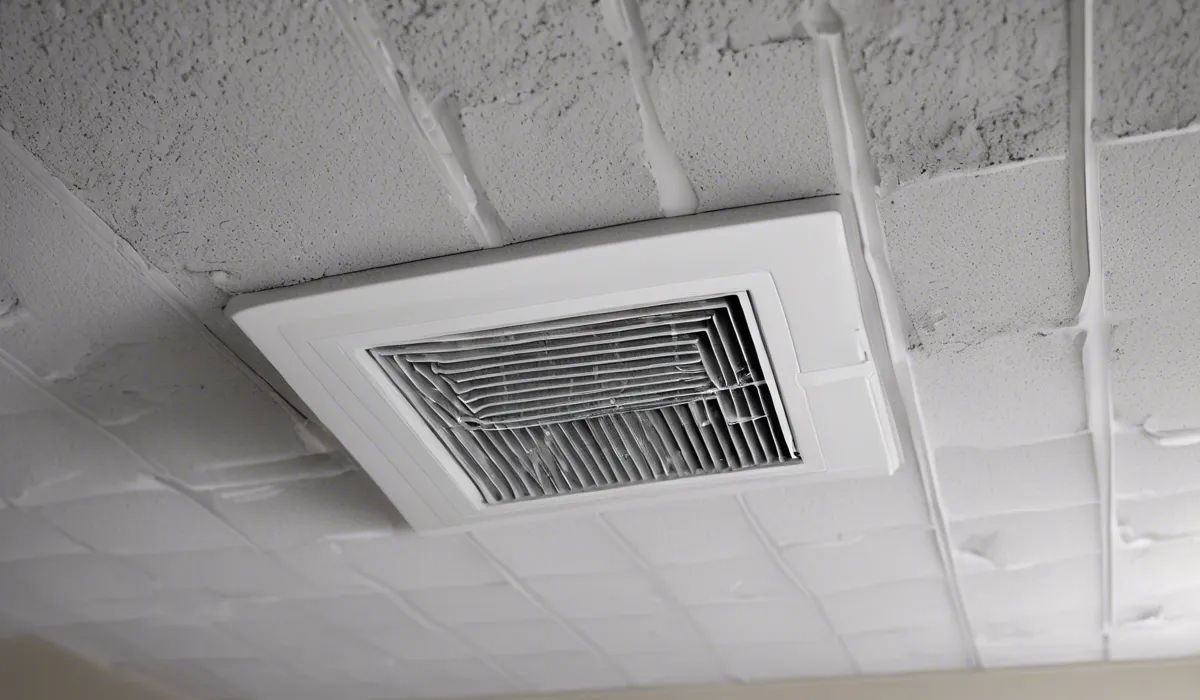Mold on air vents can be dangerous as it may indicate a wider mold issue and can spread spores throughout a home, potentially causing health problems, especially for those with allergies or compromised immune systems.
Understanding Mold on Air Vents

What Is Mold?
Mold is a type of fungus that grows in multicellular structures called hyphae. It thrives in moist environments and can appear in various colors, including black, white, green, or yellow.
Common types of mold found in homes include Aspergillus, Cladosporium, and Stachybotrys, often known as black mold.
Development of Mold in Air Vents
Mold finds its way into air vents when mold spores, which are always present in the air, settle in the ductwork.
The combination of dust, debris, and moisture inside the vents creates an ideal breeding ground for these spores to grow and multiply.
Conditions Favoring Mold in HVAC Systems
Mold growth is most prolific in warm, damp environments. In HVAC systems, high humidity levels, poor ventilation, and accumulation of organic matter in ducts can all contribute to mold proliferation.
Leaks and condensation within the system can also exacerbate the problem.
Spotting Mold on Vents
Visual signs of mold include discolored patches or fuzzy growths around vent areas. A musty odor is another strong indicator that mold is present.
It is important to inspect regularly for these signs to catch mold growth early.
Health Risks Associated with Mold Exposure

Immediate Health Effects of Mold
Short-term exposure to mold can cause symptoms such as sneezing, coughing, throat irritation, and nasal stuffiness.
Some individuals might experience skin irritation or a burning sensation in the eyes.
Risks for Sensitive Individuals
People with asthma, allergies, or compromised immune systems are at greater risk for severe reactions to mold.
Long-term exposure can lead to more serious conditions like mold-induced asthma or allergic fungal sinusitis.
Mold and Indoor Air Quality
Mold in air vents can significantly reduce indoor air quality, leading to discomfort and health issues.
Poor air quality is particularly detrimental to respiratory health and can exacerbate conditions such as asthma and bronchitis.
Symptoms Signaling Mold Exposure
Be vigilant for symptoms like persistent coughing, wheezing, shortness of breath, or chest tightness.
These symptoms could indicate mold exposure, especially if they worsen when the HVAC system is running.
Prevention and Remediation Strategies

Maintenance of HVAC Systems
Regularly servicing your HVAC system is crucial in preventing mold growth. This includes cleaning or replacing filters, inspecting for duct leaks, and ensuring all components are free of dust and moisture.
Managing Humidity Indoors
Keeping indoor humidity levels between 30% and 50% is vital. Use dehumidifiers if necessary and fix any water leaks to minimize the risk of mold in your home.
Improving Ventilation and Reducing Moisture
Good ventilation helps in reducing moisture levels which discourage mold growth. Make sure that areas like bathrooms and kitchens, which are prone to moisture, are well ventilated.
Use exhaust fans and consider opening windows when weather permits.
Professional Mold Remediation
If you discover extensive mold growth, it’s often best to call in professionals who have the tools and expertise to safely remove mold from your HVAC system and home.
Keeping Mold at Bay
After remediation, ongoing prevention is key. Use mold-resistant products, maintain good air quality, and address any moisture issues promptly. By being proactive, you can ensure that mold does not make a comeback.
This detailed guide should provide you with a comprehensive understanding of the dangers of mold on air vents, how to identify it, the health risks associated with exposure, and the most effective strategies for prevention and remediation.
Remember, a clean and well-maintained HVAC system contributes to a healthier living environment.
FAQs About Mold on Air Vents
Is mold in air vents a common problem?
Mold in air vents is not uncommon, especially in humid environments or in systems where moisture can accumulate.
Can mold in air vents spread throughout my home?
Yes, mold in air vents can disperse spores through the air, potentially spreading mold to other areas of your home.
Is it dangerous to have mold on air vents?
Yes, having mold on air vents can be dangerous as it may cause health problems, particularly for individuals with allergies or weakened immune systems.
What health issues can mold from air vents cause?
Mold from air vents can cause respiratory problems, allergic reactions, and worsen conditions like asthma.
How can I prevent mold from growing in my air vents?
Prevent mold growth in air vents by maintaining low humidity levels, ensuring proper ventilation, and having regular HVAC maintenance.
Final Thoughts
Mold presence on air vents is a significant concern, as it can be symptomatic of a broader mold problem within the home.
The circulation of mold spores through air systems can have adverse health effects, particularly for individuals with allergies or weakened immune systems, necessitating prompt attention and remediation to ensure indoor air quality and occupant health.
